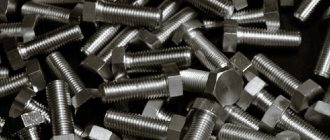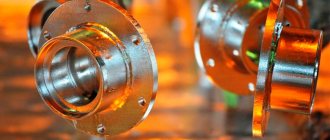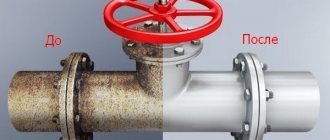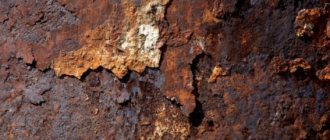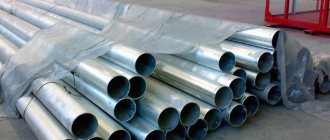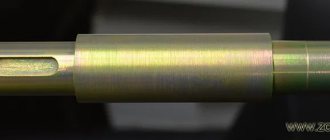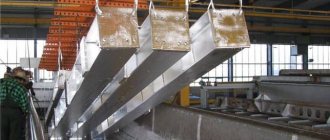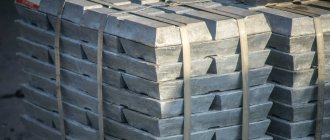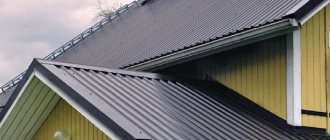Electroplating is the application of various metal and chemical coatings to metal surfaces. The most common electroplating method is galvanizing.
Galvanic galvanizing is the process of applying a thin layer of zinc to the surface of metal products in an electrolyte solution. During the electrolysis process, zinc dissolves, and its ions with a positive potential are deposited on the surface of the base metal to form a layer with a thickness of 4 to 20 microns, which accurately follows the contours of the product. The coating during galvanizing is particularly precise and smooth.
galvanin chemistry"
, LT-2021 Vilnius, Lithuania
tel.: +, fax: +, E-mail: *****@***lt
1. INTRODUCTION
1.1.
The A1-DE alkaline cyanide-free galvanizing process is designed to produce a shiny protective and decorative zinc coating. The A1-DE process makes it possible to eliminate the use of cyanide salts and ensures a stable production of decorative zinc coating, which is easy to chromate and has increased corrosion resistance.
1.2.
Electrolyte A1-DE has high covering and dispersive power. In terms of these parameters, it exceeds even cyanide electrolytes, which eliminates the formation of too thick a coating on the edges of parts and uncovered areas in through and even blind holes.
1.3.
The resulting shiny zinc coating is characterized by ductility and a fine-crystalline structure. The coating is also more shiny than that obtained from conventional alkaline electrolytes, and in terms of decorativeness it is actually not inferior to zinc coating obtained from slightly acidic electrolytes. The maximum thickness of the resulting coating is 18 μm.
1.4.
Electrolyte A1-DE is easy to use, since it uses only one main shine-forming additive. Al-DE additive consumption is approximately (8 – 12) cm3/m2 or (1.0 – 2.0) dm3 per 10,000 A hour. The additive is easily soluble and stable in the electrolyte.
1.5.
The A1-DE shine-forming additive is an aqueous solution of organic compounds that do not form complexes with metals, so wastewater treatment is reduced to diluting the electrolyte and removing zinc from it. Replacing cyanide or weakly acidic electrolytes with alkaline ones does not require alteration of equipment and communications.
2.
EQUIPMENT
2.1.
The galvanizing bath is made of polypropylene or steel lined with alkali-resistant material. The bath must have side suction. The use of any structural elements and devices made of stainless or chromium steel is prohibited.
2.2.
To maintain the electrolyte temperature within the required limits, the galvanizing bath must be equipped with a device for heating and cooling.
2.3.
It is necessary to provide for the possibility of periodic or continuous filtration of the electrolyte. Filtration is carried out through polypropylene fabric or other alkali-resistant material. It is recommended to sprinkle perlite on the filter cloth.
2.4.
It is necessary to have a spare container for draining the electrolyte. The container can be made of unalloyed or low-carbon steel without lining.
2.5.
The preparation of the electrolyte is carried out in a steel bath or in a bath lined with material resistant to temperatures up to 90 ° C and alkalis. The bathtub must be equipped with exhaust ventilation. It is recommended to equip it with a bubbler.
Electroplating with zinc (zinc plating, galvanizing)
Galvanizing and galvanizing are based on an electrochemical process.
In a specially created liquid medium—an electrolyte—zinc is deposited onto a workpiece that has a negative charge. If decorative properties are important, and not just the formation of a protective coating, galvanizing can be complemented by processes such as cadmium plating, chromating and phosphate treatment. Most often, galvanic galvanizing, the price of which in the capital is affordable for customers with any budget, is performed for cast iron and low-carbon steels - alloys that are most vulnerable to corrosion. Aluminum is also processed in this way - an already corrosion-resistant and aesthetic material.
As for the range of metal products, most often they order the processing of small parts: for example, galvanic galvanizing of hardware. Traditionally, tools, pendants, brackets, various types of supports and car parts are also galvanized.
galvanin chemistry"
, LT-2021 Vilnius, Lithuania
tel.: +, fax: +, E-mail: *****@***lt
2.6.
During operation of the electrolyte, carbonates may accumulate. When their concentration is more than (70 - 80) g/dm3, it is necessary to clean the electrolyte. This is achieved by cooling the electrolyte to a temperature of (5 – 10) °C. It is recommended to have a cooling device for this purpose.
2.7.
The anodes are made of sheet steel and hung on rods using steel hooks.
2.8.
The pendants are made of steel and insulated with material resistant to alkalis and acids. To insulate pendants, it is recommended to use polyvinyl chloride pastes [for example, plastisol D-2A (TU)]. Before applying plastisol, the pendants are coated with AK-091 (TU) primer or other similar primer. The hooks of the pendants must be steel. The contact hook holder of the suspension is made of brass. It is possible to use plastisols and primers of other brands, as well as other insulation methods.
3.
PROCESS STAGES
3.1.
Degreasing in organic solvents
3.2.
Chemical degreasing in alkaline solution
3.3.
Hot water rinsing
3.4.
Electrochemical anodic or cathodic degreasing in an alkaline solution
3.5
. Hot water rinsing
3.6.
Cold water rinsing
3.7.
Activation or etching
3.8.
Cold water rinsing
3.9.
Anodic desludge removal in alkaline solution (operation performed if necessary)
3.10
. Cold water rinsing
3.11.
Cold water rinsing
3.12.
Galvanizing
3.13.
Catching
3.14.
Cold water rinsing
3.15.
Clarification in (0.3 – 0.5)% nitric acid solution (can be excluded)
3.16.
Passivation
3.17.
Catching
3.18.
Cold water rinsing
3.19.
Washing in warm water (temperature no more than 40 °C)
3.20.
Drying (temperature no more than 60 °C)
Types and process of galvanizing
Depending on the composition of the electrolyte, there are three types of galvanizing: acid, alkaline and cyanide.
The most commonly used electrolyte is weakly acid based. This is the best solution for cast iron and low-alloy steel products, since the material retains its structure and is completely transformed in appearance. The galvanizing process itself - galvanizing - includes the following stages:
- cleaning the workpiece,
- her etching,
- washing,
- applying degreasing compounds,
- secondary flushing,
- galvanizing itself,
- final washing of galvanized products and their drying.
The work is completed with final quality control of the applied coating.
galvanin chemistry"
, LT-2021 Vilnius, Lithuania
tel.: +, fax: +, E-mail: *****@***lt
6.
PREPARATION OF ELECTROLYTE FOR WORK
6. 1. 1 method of preparing electrolyte
Table 3 Materials for preparing 1000 dm3 of electrolyte
| Name of material | Quantity |
| 1. Zinc oxide 3. Shine-forming additive A1-DE 5. Demineralized water or condensed water | 15 kg 135 kg 10 dm3 20 dm3 up to 1000 dm3 |
Approximately 250 dm3 of demineralized water or condensate water is poured into the bath for preparing the electrolyte. With vigorous stirring, add 135 kg of sodium hydroxide in portions until completely dissolved. In this case, the solution is heated. 15 kg of zinc oxide is slowly added to the hot solution while stirring and stirred until completely dissolved. The volume of the solution is adjusted to 1000 dm3 with water and allowed to stand for 24 hours. The solution is then decanted or filtered into a galvanizing bath and a sample of the electrolyte is taken to determine the concentrations of zinc and sodium hydroxide. Based on the results of the analysis, if necessary, the electrolyte is adjusted, and then 20 dm3 of the A1-EK cleaner and 10 dm3 of the A1-DE additive are added. After mixing, carry out the Hull cell test.
6.2. Method 2 for preparing electrolyte
Table 4 Materials for preparing 1000 dm3 of electrolyte
| Name of material | Quantity |
| 1. Zinc anodes 3. Shine-forming additive A1-DE 5. Demineralized water or condensed water | 135 kg 10 dm3 20 dm3 up to 1000 dm3 |
Approximately 500 dm3 of demineralized water or condensate water is poured into the bath for preparing the electrolyte. With vigorous stirring, add caustic soda until the temperature of the solution rises to 60 ºС. Zinc anodes in steel baskets are loaded into the hot solution. To maintain the temperature (60 ºС), caustic soda is constantly added. When the concentration of zinc in the electrolyte reaches (20 - 28) g/dm3 (the concentration is determined by titration), the baskets with anodes are removed from the bath. Then the volume of the solution is adjusted with water to ~95% of the required volume and caustic soda is added to a concentration of 135 g/dm3. When the electrolyte temperature drops to 30 ºС, 20 dm3 of A1-EK cleaner and 10 dm3 of A1-DE additive are added to the bath. The volume of the solution is adjusted to 1000 dm3 with water and after mixing, a test is carried out in a Hull cell.
galvanin chemistry"
, LT-2021 Vilnius, Lithuania
tel.: +, fax: +, E-mail: *****@***lt
6.3.
Processing the electrolyte with current
If a dark matte coating is obtained on a plate coated in a Hull cell at low and medium current densities (up to 5 A/dm2), this indicates that contaminants have entered the electrolyte with chemicals or water during its preparation. In the Hull cell, the possibility of treating the electrolyte with current and the amount of electricity (Ah) required for such treatment are determined. The amount of electricity is determined by sequentially galvanizing several plates in the same portion of electrolyte until satisfactory coating quality is obtained. Based on the data obtained in the Hull cell, the entire electrolyte is treated with current. Typically, for processing it is necessary to pass (1 – 3) A hour/dm3.
The electrolyte is processed in a galvanizing bath on corrugated cathodes or any parts at a current density of (0.5 - 1.0) A/dm2. To speed up processing, the maximum possible number of cathodes are hung into the bath.
7.
ELECTROLYTE ANALYSIS
7.1.
Determination of zinc content
7.1.1. Reagents and solutions:
distilled water according to GOST 6709-72;
a buffer solution whose pH value is (9.5 – 10.0); prepared as follows: 55 g of ammonium chloride according to GOST 3776-72, 350 cm3 of 25% aqueous ammonia according to GOST 3760-79 are placed in a volumetric flask with a capacity of 1 dm3 and diluted with distilled water to the mark;
indicator eriochrome black T; prepare as follows: thoroughly grind 0.1 g of eriochrome black T according to TU 5 with 100 g of sodium chloride according to GOST 4233-77;
Trilon B according to GOST, 0.1 N solution.
7.1.2. Carrying out analysis
Place 2 cm3 of electrolyte in a conical flask with a capacity of 500 cm3, add 200 cm3 of distilled water, 10 cm3 of buffer solution and about 0.2 g of indicator until the solution turns red-violet. Titrate with Trilon B solution until the color turns blue.
7.1.3. Processing the results
The content of zinc C in g/dm3 is calculated using the formula:
C = 1.63 V,
where V is the volume of 0.1 N Trilon B solution consumed for titration, cm3.
7.2.
Determination of sodium hydroxide and sodium carbonate content
7.2.1. Reagents and solutions:
distilled water according to GOST 6709-72;
hydrochloric acid according to GOST 3118-77, 0.2 N solution;
phenolphthalein indicator according to TU 7, 0.1% alcohol solution;
methyl orange indicator according to TU 4, 0.2% aqueous solution;
sodium chloride according to GOST 4233-77;
sodium carbonate acid according to GOST 4201-79.
Metal galvanizing technology
So, the basis of galvanic galvanizing in Moscow, and anywhere else in Russia and the world too, is the principle of electrolysis.
In this case, the workpiece being processed becomes a positively charged element. Pure zinc plates have a negative charge, from which metal particles are deposited through electrochemical action. In order for this process to proceed efficiently and evenly, the electrolyte must contain the necessary reagents. Their role is usually played by zinc salts - sulfate and chloride, as well as its fluoroborate. In addition to this “bouquet” of substances, sodium, aluminum and potassium salts are used.
Because zinc plates are exposed to a variety of substances, over time they can become depleted or become coated with a layer of salt. Specialists performing galvanic galvanizing in Moscow need to monitor their condition and replace them if necessary.
In the description of galvanizing technology you can find such a term as “yellow galvanizing”. Of course, in this case we mean the yellowish tint that the zinc coating acquires. It is impossible to achieve this color by galvanization alone: the necessary aesthetic effect is achieved by subsequent passivation and chroming of the workpiece. Thanks to passivation, a thin film of zinc oxide appears on the surface of the coating. Then the workpiece is dipped into an acidified solution containing chromates.
Yellow galvanizing in Moscow is used for aesthetic purposes: for example, so that the fasteners and the elements that they connect are compatible in color.
galvanin chemistry"
, LT-2021 Vilnius, Lithuania
tel.: +, fax: +, E-mail: *****@***lt
7.2.2. Carrying out analysis
Place 2 cm3 of electrolyte in a conical flask with a capacity of 200 cm3, add 50 cm3 of distilled water, previously boiled to remove carbon dioxide, and 2-3 drops of phenolphthalein indicator. In another similar flask, pour 50 cm3 of an aqueous solution containing (0.3 - 0.4) g of sodium chloride and a small amount (about 0.02 g) of sodium carbonate and add 2-3 drops of phenolphthalein indicator. Then the analyzed solution is titrated until the color of the solution in both flasks becomes the same. After this, the consumed volume of hydrochloric acid (V1) is counted. Next, add 2-3 drops of methyl orange and continue titration until the solution turns reddish. Then a second reading of the volume of hydrochloric acid solution (V2) is made.
7.2.3. Processing the results
The content of sodium hydroxide C1 in g/dm3 is calculated using the formula:
C1 = 4 (2 V1 – V2)
The content of sodium carbonate C2 in g/dm3 is calculated using the formula:
C2 = 10.6 (V2 –V1)
7.3.
Determination of the content of shine-forming additive Al-DE
7.3.1. Reagents, solutions and instruments:
Hull cell, made according to drawing 1 (section 14) from organic glass according to GOST with a thickness of (3 - 5) mm or other materials that do not interact with the electrolyte;
cathode - a polished plate made of steel grade 10 according to GOST 1050-88 with a length of (b0.0 ± 1.5) mm, a width of (45.0 ± 1.5) mm and a thickness of (0.4 ± 0.1) mm;
anode - a zinc plate of the TsO grade according to GOST 3640-79 with a length of (45.0 ± 1.5) mm, a width of (38.0 ± 1.0) mm and a thickness of (7.5 ± 2.0) mm. On the working side of the plate, in order to increase the surface, grooves with a depth of (1 - 2) mm are milled;
stabilizing rectifier, output voltage (0 – 30) V, current up to 2A;
stopwatch;
laboratory filter paper according to GOST;
distilled water according to GOST 6709-72;
hydrochloric acid according to GOST 3118-77, diluted 1:2;
nitric acid according to GOST 4461-77, solution with a mass fraction of 0.5%;
Viennese lime;
cylinders, beakers and measuring flasks according to GOST 1770-74;
pipettes according to GOST.
7.3.2. Carrying out analysis
Electrolysis equipment is connected in series. 40 cm3 of electrolyte, corrected for the main components, is placed in a Hull cell. The cathode is degreased with Vienna lime, activated in a solution of hydrochloric acid and electrolysis is carried out for 10 minutes at a current of 0.4 A. Then the cathode is washed with water, the lower half of the coating is clarified in a solution of nitric acid, washed again with water and dried with filter paper. The appearance of the zinc coating must meet the following requirements:
Features of the galvanizing procedure and the main methods of metal protection
Metal corrosion, or the process of its oxidation, is especially intensified in conditions of high humidity. To prevent corrosion of metal products, protective coatings are applied to them. Galvanizing of metal is considered one of the most reliable, since zinc takes on the effects of aggressive environments. Galvanizing provides not only barrier, but also electrochemical protection of the metal. During the reaction, an oxide layer appears on the surface of the part, which provides additional protection.
After mechanical destruction of the coating, the effect of the protective layer ceases. There are various types of metal galvanizing, many of them require complex and expensive equipment, but some can also be used at home.
Galvanized pipes
Galvanizing technology was first mastered in France in the 18th century and further developed in England. Domestic scientists Jacobi and Mendeleev made a great contribution to improving the process. Today, galvanizing metal is one of the most affordable ways to protect against corrosion.
galvanin chemistry"
, LT-2021 Vilnius, Lithuania
tel.: +, fax: +, E-mail: *****@***lt
unbleached coating - yellowish-gray, shiny over the entire cathode;
lightened coating - light shiny; on the left edge of the cathode (at high current densities), a darker stripe with vertical lines no more than 10 mm wide is allowed; on the right edge (at low current densities) there is a matte strip no more than 4 mm wide.
A dark matte coating on the entire plate, as well as burnt marks at a current density of more than 8 A/dm2, indicates a lack of additive and (or) a low alkali concentration. The strong shine (burn) of the plate at high current densities is the result of a lack of additive in the electrolyte.
8.
OPERATION AND ADJUSTMENT OF ELECTROLYTE
8.1.
Main components
The electrolyte prepared as described above is ready for use. After operating the electrolyte for several days, i.e., after passing (5 – 10) A hour of electricity through 1 dm3 of electrolyte, the gloss of the coating increases slightly, and the current yield of zinc increases by approximately 1%.
The electrolyte is adjusted according to the analysis data. The frequency of analysis of the galvanizing electrolyte depends on the degree of loading of the bath. With daily continuous operation of a galvanizing bath, it is recommended to determine zinc and additives daily, and sodium hydroxide - 2 times a week.
During operation of the electrolyte, it is necessary to maintain the optimal zinc content. This can be achieved this way.
Ordinary mild steel anode baskets filled with zinc balls are placed in the bath. It is more convenient to hang them on the anode rod, but be sure to isolate them from it. Dissolution of zinc occurs only chemically. To maintain optimal zinc content, the number of baskets must be carefully controlled. It should be borne in mind that when the galvanizing bath is inoperative, zinc accumulates in the electrolyte due to the chemical dissolution of the anodes. Depending on the number of zinc anodes in the bath and the sodium hydroxide content in the electrolyte, the zinc content can increase by (0.2 - 0.5) g/dm3 per day. Therefore, during non-working hours of the bath, it is necessary to remove the zinc anodes from it.
In larger installations, it is recommended to have a separate dissolution vessel in which zinc balls are placed in steel baskets. Then the solution is fed through a filter into the working bath using a pump. Then it is necessary to regulate the supply of solution until a stable concentration of zinc is obtained. In this case, circulation is applied only during the zinc deposition process. During non-working hours, zinc balls should not be removed from the container.
If for some reason the zinc content in the electrolyte decreases to 6 g/dm3, and it is urgently necessary to restore the normal performance of the electrolyte, it is corrected with a concentrate of the following composition:
zinc oxide – 93 g/dm3
caustic soda – 375 g/dm3.
Galvanizing methods
Today, galvanizing of metal is carried out using the following methods:
- hot;
- cold;
- galvanic;
- gas-thermal;
- thermal diffusion.
The choice of method that will be used for galvanizing parts and structures made of steel depends on their operating conditions, as well as on the characteristics that the protective layer must meet. Regardless of the galvanizing technology used, it is necessary to determine in advance the thickness of the protective layer being formed, which depends on such technological process parameters as the time of exposure of the metal to the working environment, as well as on the processing temperature. When using steel parts and structures on the surface of which a layer of zinc coating is applied, it should be borne in mind that they should not be subjected to significant mechanical stress, since the protective coating of this metal is highly brittle and can easily be destroyed.
To understand which types of galvanizing should be used in a given situation, you need to study each of them well.
Hot galvanizing
Hot galvanizing of metal structures, although it makes it possible to achieve the best quality and durability of processed products, ranks only second among similar technologies in terms of prevalence. When using this method, the problem of environmental safety arises, since its implementation requires the use of strong chemical reagents to prepare the surface to be treated, and the procedure itself is performed in molten zinc.
Industrial hot dip galvanizing line
In the process of galvanizing steel using the hot method, there are two stages:
- preparing the surface of the product for processing;
- the procedure itself for coating metal with zinc.
In turn, the preparation of the treated surface is also carried out in several stages:
- cleaning and degreasing;
- etching using acid solutions;
- washing after pickling and fluxing;
- thorough drying.
Immersion of supports in a hot zinc bath
After the product has gone through all the stages of preliminary preparation and has completely dried, it is placed in a special bath filled with molten zinc. As a result, a thin layer consisting of iron and zinc (Fe-Zn) is formed on the surface of the steel product, which provides reliable protection against corrosion. After removal from the bath, the product is blown with compressed air, which ensures not only its drying, but also the removal of excess zinc from the treated surface. The big disadvantage of this method of galvanizing metal is that the dimensions of the products that can be subjected to it are limited by the dimensions of the bath with molten zinc. Meanwhile, at large manufacturing enterprises, the process of galvanizing steel - scaffolding, lighting masts, power transmission line supports - is carried out in exactly this way.
Since this method is associated with high labor costs and the need to use complex technological equipment, it is not used for galvanizing metal at home.
Cold galvanizing
The wide popularity that the cold galvanizing method of steel has gained in recent years is due to a number of reasons. The most important of them is that, despite its high manufacturability and ease of implementation, this galvanizing method allows you to create a layer on the metal surface that has high protective properties. It is also important that this does not require equipment for galvanizing metal, so this galvanizing can be done with your own hands, even at home.
The essence of cold galvanizing technology is that a special zinc-containing mixture is applied to the surface of the product being processed, which can be zinconol or any other composition. You can apply zinconol or another mixture using a regular brush or roller. In cases where it is necessary to coat products with complex configurations or hard-to-reach places with such a mixture, you can use a spray gun to apply it. Zinconol and other compounds used for cold galvanizing make it possible to obtain a protective layer on the metal surface containing 89–93% zinc.
Cold galvanizing scheme
Galvanizing metal using the cold method has no alternative in cases where it is necessary to provide corrosion protection to structures that cannot be coated with a layer of zinc using other technologies. Such structures, in particular, include already installed pipes, power line supports, elements of railway tracks, as well as other metal elements that are in an installed (stationary) state.
Zinconol and other compounds for cold galvanizing are widely used in repair work when it is necessary to restore the damaged zinc layer on a metal product or structure. In particular, using this method, restorative galvanization of a car body can be performed (moreover, you can use zinconol and other mixtures for the initial, complete galvanizing of the body yourself).
Compositions for cold galvanizing are polymer solutions with the addition of highly dispersed zinc powder
Cold galvanizing of steel products can be carried out in a fairly wide temperature range, and the resulting coating is distinguished not only by high protective properties, but also by good elasticity, resistance to mechanical damage and thermal expansion.
If we talk about the disadvantages of the cold galvanizing method, they include the insufficiently high resistance of the formed coating to mechanical stress, as well as the need for strict adherence to safety precautions when carrying out such a procedure, which requires the use of organic solvents.
Galvanic method
Galvanic galvanizing, during which an electrochemical effect is applied to the surface of the processed product, makes it possible to obtain coatings that are not only highly accurate in thickness, but also have exceptional smoothness. This electrochemical galvanizing ensures the formation of a protective layer on the metal surface, the thickness of which is in the range of 20–30 microns.
Galvanic galvanizing allows you to adjust the thickness of the formed protective layer, while it is uniform and highly decorative. Due to the fact that when performing galvanic galvanization, the metal and the zinc that is applied to its surface are combined at the molecular level, the finished coating is characterized by exceptionally high adhesion to the base metal. Meanwhile, the degree of adhesion is influenced by the presence of fatty and oxide films on the surface of the processed product, which are almost impossible to completely remove (especially in mass production conditions).
The galvanizing line includes a full range of processing (from preparation to fixing)
Galvanic galvanizing is performed as follows. The structure to be processed and the zinc plates are placed in an electrolytic solution and then connected to the positive and negative contacts of an electrical current source. Due to the difference in electrical potential formed in this way, the plates begin to dissolve in the electrolyte, and zinc molecules rush to the surface of the workpiece, settling on it and forming a uniform protective layer.
The great advantage that galvanic galvanizing differs from other technologies is that it allows the formation of a protective layer on the surface of the product, characterized by exceptional decorative characteristics. The galvanizer can regulate the thickness of such a layer.
The most significant disadvantage of this method is its rather high cost, which consists not only of the cost of zinc plates and electrolyte. For example, used electrolyte, which contains a fairly large amount of hazardous waste, must be thoroughly cleaned before being sent to the sewer, which also seriously affects the cost of the method.
Thermal diffusion galvanizing
Thermal diffusion technology of galvanizing metal (TDZ), which is often called sherardization, was developed back in the 20s of the last century, but for a long time it was not used actively enough. Since the end of the last century, galvanizing metal using this technology has regained popularity.
The essence of this method of coating a metal product with zinc is that the workpiece, together with a zinc-containing dry mixture, is placed in a sealed container in which a high temperature is created - about 2600°. Under the influence of such a high temperature, zinc atoms transform into a gaseous state, which greatly facilitates their diffusion penetration into the surface layer of the workpiece. This galvanizing technology is used mainly in cases where it is necessary to form a protective layer on the surface of the metal being processed, the thickness of which exceeds 15 microns.
Installation for thermal diffusion galvanizing
Thermal diffusion coating of metal products with zinc, preparation for which is carried out in the same way as with hot-dip galvanizing, has a number of advantages, which include:
- complete environmental safety of the process, since it is carried out in a sealed container;
- almost complete absence of pores on the finished protective coating, characterized by high adhesion to the surface being treated;
- high protective ability of the coating obtained using this technology (5 times higher than that of a zinc layer formed by galvanic method);
- the ability to adjust the thickness of the zinc layer in a fairly wide range;
- preservation of even the complex shape and geometric parameters of a zinc-coated product;
- no need for special disposal of generated waste.
This is what products coated with zinc using the TDC method look like
This method of coating metal products with zinc also has its disadvantages, which include:
- not very attractive dirty gray color of the finished coating and lack of metallic shine;
- low productivity;
- the presence of zinc dust inclusions in the ambient air during such a process, which is harmful to human health;
- heterogeneity of zinc coating thickness.
Gas thermal spraying of zinc
To coat a metal sheet or three-dimensional part with a layer of zinc, you can use the gas-thermal galvanizing method. The essence of this method is that zinc, initially present in the dry mixture or wire, is sprayed onto the surface of the workpiece in a gaseous environment. It is optimal to use this technology in situations where a zinc layer must be applied to large-sized products that cannot be processed by other methods.
The principle of gas-thermal galvanizing
When using this method, coating a metal product with zinc occurs as follows. Particles of molten metal, hitting the surface to be treated, form a thin layer, reminiscent of scales in its structure. This coating, which is characterized by the presence of a large number of pores, is complemented by the application of paints and varnishes. The layer created as a result of this combination has protective properties that allow the metal product on which it is applied to be successfully used for a long time in quite aggressive environments (high humidity, constant exposure to sea and fresh water, etc.).
The parameters of zinc coatings applied by all of the above methods are regulated by the corresponding GOST, which specialists should be guided by.
galvanin chemistry"
, LT-2021 Vilnius, Lithuania
tel.: +, fax: +, E-mail: *****@***lt
The cooled concentrate is slowly introduced into the bath with vigorous stirring of the electrolyte. If the content of caustic soda in the electrolyte before the introduction of the concentrate was sufficient, then correction with alkali is not carried out for some time.
In drum installations, the anode baskets must have good contact with the anode rod. Anodic and chemical dissolution of zinc occurs. During intensive work on drum installations, as a result of large carryover of electrolyte by drums, anodic and chemical dissolution cannot maintain the required zinc content. Therefore, adjustment of the electrolyte with concentrate in the drum bath should be carried out regularly.
Correction of the electrolyte with alkali is carried out according to the results of the analysis by slowly adding a cooled solution of sodium hydroxide containing (300 - 400) g/dm3 of alkali, with intensive stirring of the electrolyte.
8.2.
Shine-forming additive A1-DE
To maintain the performance of the galvanizing electrolyte, it is necessary to regularly correct it with a shine-forming additive. The additive is consumed during electrolysis and through removal. Taking into account the average removal and consumption of the additive during electrolysis, the average adjustment rate is (1 – 2) dm3 per 10,000 A hour. The exact rate of consumption of the shine-forming additive must be established based on the operational data of the bath over several months, since the consumption depends on the loading density of the bath, intensity of operation, current density, configuration of parts, electrolyte carryover and other factors. Correction with the additive is carried out at least after passing 4 A hour/dm3.
Correction with a shine-forming additive before establishing the exact rate of its consumption must be carried out on the basis of tests in a Hull cell.
8.3.
Cleaner A1-EK
Correction with cleaner A1-EK is carried out only when a new portion of sodium hydroxide is introduced. For 1000 g of hydroxide, (160–240) cm3 of cleaner is added.
An overdose of cleaner should be avoided. This leads to a significant reduction in current output.
8.4.
Electrolyte filtration
To remove mechanical impurities, it is recommended to carry out continuous filtration of the electrolyte. If there is no stationary filtration installation, the frequency of filtration depends on the load of the bath, the presence or absence of anode bags and the quality of cleaning of parts before galvanizing and can range from one filtration per day to one filtration every few months.
9.
HARMFUL IMPURITIES
9.1.
Heavy metal ions do not have a significant effect on the operation of the electrolyte. When salts of these metals enter the electrolyte, sparingly soluble hydroxides of heavy metals are formed, which precipitate. It is only necessary to filter out the precipitated hydroxides, since their presence in the electrolyte can create roughness in the coating.
Electroplating with zinc (zinc plating, galvanizing) in neighboring regions
For a service such as galvanizing, the price of performing work in Moscow and the regions remains at approximately the same level.
However, some enterprises in the Moscow region and neighboring regions offer good discounts for this treatment. But before taking advantage of their offers, we advise you to weigh the pros and cons. First, study reviews about the contractor and evaluate his experience in the market. Secondly, keep in mind that when ordering galvanizing, a geographically distant enterprise will have to incur costs for delivering blanks to the workshop and transporting finished products to its premises. With constantly rising gasoline prices, transportation can eat up a significant portion of your budget.
We perform yellow galvanizing in Moscow and simple galvanizing at very competitive prices for the customer. In addition, we take upon ourselves the solution of the transport issue. Is it worth going somewhere if acceptable offers are practically at hand?
galvanin chemistry"
, LT-2021 Vilnius, Lithuania
tel.: +, fax: +, E-mail: *****@***lt
If any stable complex salt of a heavy metal [chromium (VI) > 5 mg/dm3, copper > 10 mg/dm3, iron (II) > 10 mg/dm3] gets into the electrolyte, causing deterioration in the quality of the coating, it is necessary to work out the electrolyte electric shock The processing time and mode are set based on tests in a Hull cell.
The greatest danger is posed by chromium (VI): when its content in the electrolyte is more than 5 mg/dm3, a black coating is obtained at low and medium current densities and abundant gas evolution is observed at the cathode. The possibility of removing chromium by current treatment must be checked in a Hull cell and, if it is effective, the electrolyte must be treated with current as indicated in section 5.2.
If current treatment is ineffective, then it is necessary to clean the electrolyte from chromium in this way. (0.1 – 0.4) g/dm3 of sodium hydrosulphide (Na2S204 2H2O) is scattered over the surface of the electrolyte and mixed with compressed air for 30 minutes. Then add (0.2 - 0.8) g/dm3 of 6-hydrate iron trichloride according to GOST 4147-74 in the form of a 2% solution. The electrolyte is stirred with compressed air for 30 minutes and filtered. The exact amount of iron trichloride and sodium hydrosulphide is determined based on the data obtained in the Hull cell.
9.2.
During operation of the galvanizing bath, it may become contaminated with organic impurities, which may be introduced accidentally or carried with parts from degreasing and pickling baths. Cleaning from organic impurities is carried out using active carbon of the BAU brand according to GOST 6217-74, OU-E grade according to TU 0 (or other brands suitable for this purpose). (1 – 5) g/dm3 of active carbon is introduced into the electrolyte, mixed with compressed air for (2 – 5) hours and the electrolyte is allowed to settle for (5 – 10) hours. The electrolyte is then filtered and adjusted with additive based on Hull cell testing.
9.3.
Due to contact of the electrolyte with air, sodium carbonate is formed. Sodium carbonate is not a harmful impurity until its content reaches (70 – 80) g/dm3. In practice, during normal operation of a galvanizing bath and with an electrolyte productivity of (5 – 10) m2 per year per 1 dm3 of electrolyte, the accumulation of sodium carbonate to such a concentration does not occur due to the entrainment of the electrolyte by the parts.
When the sodium carbonate content exceeds 80 g/dm3, coating roughness may appear. A “burnt” appears on the plate in the Hull cell at current densities above 8 A/dm2, which does not disappear after adjusting the electrolyte. When such an electrolyte is adjusted with an additive and alkali, turbidity occurs.
To remove carbonates, it is necessary to cool the electrolyte to a temperature of (5 – 10) °C and keep it cool (24 – 48) hours. In this case, carbonates precipitate. After this, the electrolyte is decanted or filtered, and the precipitate is dissolved in water and discharged into wastewater. When cleaning from carbonates, a loss of up to 30% of the electrolyte is possible.
The birth of electroplating in Russia and the world
Galvanic galvanizing in Moscow is only a small link in the history of galvanic technologies.
The starting point of world electroplating can be considered the 80s of the 18th century, when the discoverer of the process, the Italian Luigi Galvani, invented an element that was later named after him. Another legendary scientist, also an Italian, A. Volta, at the turn of the century introduced the first galvanic battery to the scientific community - the so-called “voltaic column.” Our compatriot V. Petrov made a significant contribution to research, who designed a similar battery, but of very impressive size. Galvanic technology of the 19th century is also associated with the name of the Russian German Boris Jacobi, the father of galvanoplasty.
The research of these brilliant minds, in fact, formed the basis for the future of galvanic galvanizing, the price of which for modern metalworking is difficult to express in nominal terms, even with a huge number of zeros.
galvanin chemistry"
, LT-2021 Vilnius, Lithuania
tel.: +, fax: +, E-mail: *****@***lt
Workers involved in the use of the additive must be provided with cotton overalls, rubber gloves, safety glasses and observe personal hygiene measures. Additive and electrolyte analysis should be performed in a laboratory fume hood.
If the additive comes into contact with the skin or eyes, rinse thoroughly with plenty of water.
13.3.
Galvanizing baths and additive storage areas must be equipped with local and general supply and exhaust ventilation, ensuring clean air in the working area, in which the content of harmful substances should not exceed maximum permissible concentrations (MAC).
Introduction.
It is no secret that the bulk of small fasteners (hardware) are subject to galvanization followed by chromating. These can be bolts, screws, nuts, washers, threaded inserts, bushings, nails, springs and many other products. Of course, galvanizing such small products in bulk form is much more convenient and faster than using hangers. The price of such coating is also not high and is calculated based on the weight of the batch. However, there are a number of cases when galvanizing on hangers will be preferable to galvanizing in a drum or bell.
